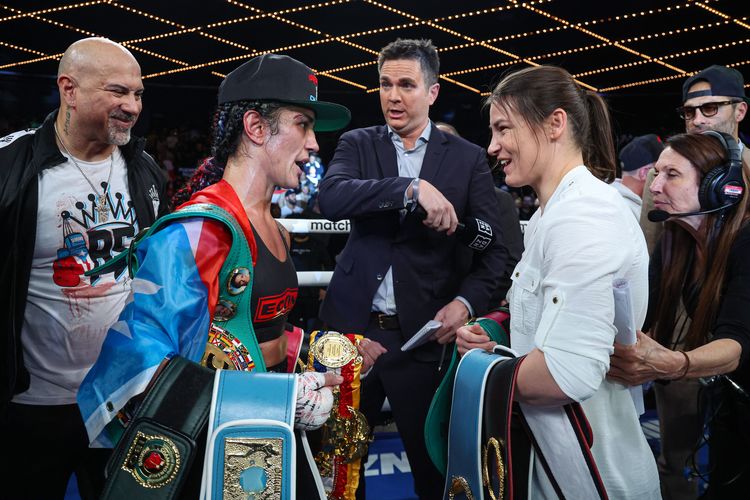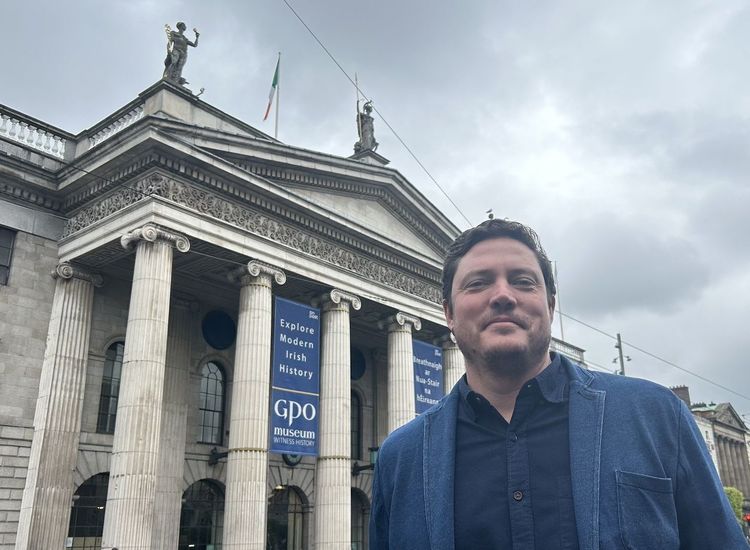In the late 1970s, on the night of St. Patrick's Day, I saw The Irish Tradition, a trio comprising button accordionist Billy McComiskey, fiddler Brendan Mulvihill, and singer-guitarist Andy O'Brien, perform at Greenwich Village's Folk City. It was the first time I saw them in concert, held in a cramped club then located across the street from the Blue Note and near Sixth Avenue.
I had moved from Philadelphia to New Jersey in 1978, and I fully expected to find in the N.J./N.Y. metro area a wealth of the Irish traditional music I had enjoyed partly through listening to Judy Weglarski's hosting stints on "The Unicorn." It was a Sunday program on WXPN-FM, the noncommercial radio station at the University of Pennsylvania, where I had gone to graduate school in the mid-1970s. (Though we overlapped at Penn, Mick Moloney and I never met there. Mick was in the Folklore Department, and I was in the English Department.)
Apart from the early, admirable WFUV-FM forays in Irish traditional music by Kathleen Biggins before she launched her unsurpassed "A Thousand Welcomes" program on Saturday mornings, as well as a smattering of other shows by other hosts on other regional radio stations, I was dismayed at the paucity of top-tier trad I heard on New York and New Jersey airwaves. And when trad was broadcast on some of the radio stations, it too often became aural wallpaper for public service announcements, community bulletin boards, or, most inexcusably, the logorrhea of the hosts. Planxty and the Bothy Band as background music? The sacrilege upset me. It still upsets me.
Playing hooky with an Irish friend from our editorial jobs at Prentice-Hall in Englewood Cliffs, N.J., I marched in New York's famed St. Patrick's Day parade in the late 1970s. My friend and I wore thin wool sports coats on one of the coldest days of the year in New York City, and the long trek up Fifth Avenue did little to keep our blood warm. As soon as our jaunt ended, we bolted into a pub for an Irish coffee. That's when my friend sprung his plans for the evening.
"We'll take the subway down to Folk City," he told me. "A group called The Irish Tradition is playing there."
I shrugged in assent. The subway and the club, at least, would be welcome refuge from the arctic weather.
Wearing drab shirts and faded jeans, and abhorring any notion of glitzy showmanship, The Irish Tradition took their seats on Folk City's stage and began to perform. From the opening medley, I was transfixed. Despite their casual outward appearance, McComiskey, Mulvihill, and O'Brien played with near-maniacal energy and focus. By the time they performed "The Corner House / My Maryann," still one of my all-time favorite reel pairings, and "Loftus Jones," one of Turlough O'Carolan's most sublime compositions, I found myself, like Alice, falling down the rabbit hole, except mine was made of Irish traditional music.
Inside Folk City after the concert, I bought the trio's first two vinyl recordings, "Catchin' the Tune" and "The Corner House." The following Monday, I delayed my editorial duties at Prentice-Hall long enough to write a lengthy letter praising the concert to the record company that issued "The Corner House." I got a phone call later that week from the head of the record company, who asked, "Is that the way you normally write?" I answered, "Yes. Why?" "You need to write about Irish music."
That year, I began cautiously while learning as much as I could about Irish trad through liner notes, books, ethnomusicological articles, and a host of other sources. Visits to Ireland and its festivals and sessions would come later. My main sources never changed: closely listening to albums, attending concerts, and interviewing musicians.
I also read a lot of the topical journalism on Irish trad at the time and was appalled by the glibness, imitation, and occasional condescension of much of the writing. As a literary critic in training at Penn, I readily recognized slickness or spottiness in the prose, but I also recognized that I had to raise my own game to meet my own idea of what these gifted musicians deserved. Writing about them was and is never less than a pleasure and privilege. Getting them initially to appear on my Saturday afternoon radio show, however, was a formidable hurdle.
In the summer of 1984, I launched the program on a low-wattage college FM station in N.J. I chose the best in recorded trad I could lay my hands on, but no guests from the trad music community in N.Y. and N.J. would come on my show. I was puzzled and getting disheartened. After discovering my radio show by accident, a well-known instrumentalist finally explained to me that a number of trad musicians from the area had been burned by boorish radio hosts and were twice-shy about appearing on air again.
Breaking the impasse for my radio show were button accordionist John Whelan, then living in Kearny, N.J., and three members of what would eventually become the band Altan: flutist Frankie Kennedy, his wife, singer-fiddler Mairead Ni Mhaonaigh, and their friend, guitarist Mark Kelly. Whelan and the trio of Kennedy, Mhaonaigh, and Kelly were guests on different dates, but their impact was instantly measurable in the invitations accepted by other musicians to appear on my program. No one said no.
What's ironic about Kennedy, Mhaonaigh, and Kelly's first appearance was their foul mood upon arriving at the radio station. Kennedy, in particular, railed about the moronic Yank who interviewed them on a radio show in another state the day before. "What a bloody waste," he sputtered in anger. Mhaonaigh and Kelly nodded.
I thought: Uh-oh.
With my wife, Nancy, engineering, I gave them a lengthy, detailed introduction before playing a track from Kennedy and Mhaonaigh's monumental duet album of 1983, "Ceol Aduaidh." I could see the tension lift as they realized I had done my homework. The interview quickly turned into a conversation, relaxed and fun, and their live performance in the studio was, without exaggeration, spellbinding. The studio phone blinked with waiting calls. I knew what was going out on the air from these three musicians was as good as I was witnessing firsthand in the studio. Their appearance helped to give the program its imprimatur, a sort of seal of authenticity, despite the fact that my pronunciations of Irish place names were balky. Off the air, Kennedy said to me, "Louse? It's Leash." On or off the air, I had botched "Laois."
"Sorry," I replied.
He laughed. "You got the music right. That's what matters to us."
After complimenting Nancy on her excellent job of mixing their live music, Kennedy said on the way out, "We'll be back."
Until 1989, the year my radio program ended, Altan, John Whelan, and 150 other musicians appeared and/or performed on it -- in some cases, several times. To Liam O'Flynn, Triona Ni Dhomhnaill, Paddy Glackin, Noel Hill, P.J. and Martin Hayes, Seamus Connolly, Mick Moloney, Brian Conway, Joanie Madden, Mike and Mary Rafferty, Tommy Sands, Fintan Vallely, Brid Harper, Sean Smyth, Cathal McConnell, Seamus Egan, Jerry O'Sullivan, Gearoid O hAllmhurain, Jimmy Keane, James Keane, Willie and Joe Kelly, and all the others: my deep thanks. To John, Frankie, Mairead, and Mark: my additional thanks for rescuing the radio show, my first and my last.
Over three decades ago, my life pivoted on a Folk City performance by The Irish Tradition. My expression of thanks to the trio here seems hopelessly inadequate.
Ever since, I have written about Irish traditional music from deep down in the rabbit hole. I remain blissfully unrescued.











